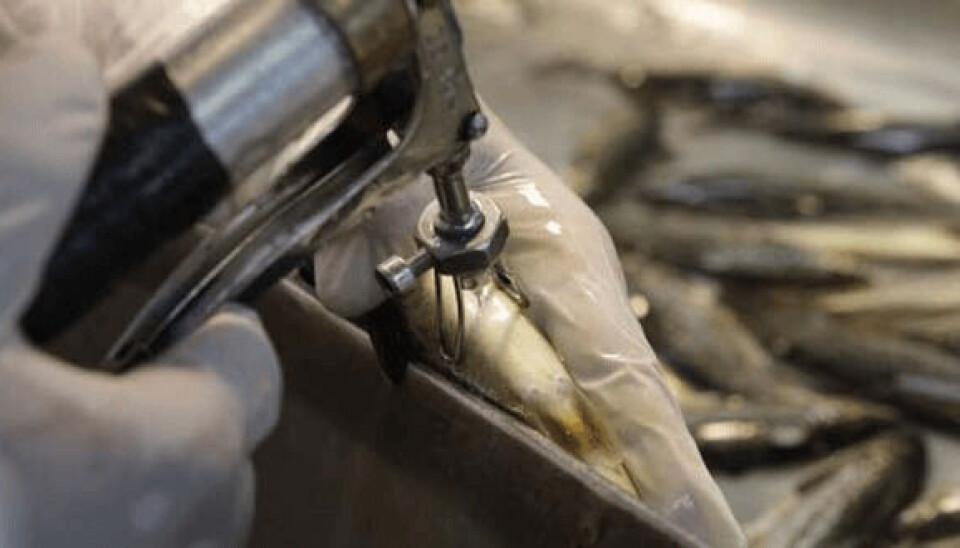
With data from Sernapesca: study proposes new calculations for the use of antibiotics
Chilean scientists propose new standardized metrics to quantify the use of antimicrobials in the industry, incorporating more variables and factors than the current ICA.
A fundamental requirement for the success of programs aimed at promoting responsible use of antibiotics in animal production is to quantify the use of antimicrobials (AMU) but in a standardized and robust manner, in such a way that allows for fair comparisons between animal populations of different size and composition and between drugs of different therapeutic potency.
Under this premise, scientists from the University of O'Higgins and Sernapesca conducted a new study where they sought to introduce the use of standardized metrics and indicators of AMU to quantify the use of florfenicol and oxytetracycline in Chilean salmon farming.
New metrics for the industry
The metrics used by the authors were the defined daily dose per animal (DDDvet), which refers to the average assumed dose of the active ingredient per kg of animal per day used in a treatment, and the used daily dose per animal (UDDA), which is the average daily dose of the active ingredient per kg of animal that is typically used in a treatment and estimates the actual dose of the antimicrobial used.
According to the authors, in general, "AMU metrics are more informative when adjusted by a population correction unit (PCU), which standardizes the consumption of antimicrobials by the number of animals or treated animal biomass. However, when using the biomass produced by a specific species during a specific period of time, the main drawback is that it only considers the animals that have been harvested, leaving out the animals that are currently alive and the animals that have died during the period, which are also likely to have been treated".
Accordingly, reporting antimicrobial use based on produced biomass is likely to overestimate antimicrobial consumption. Therefore, a more appropriate PCU must necessarily include all animals present at the beginning of the study period, regardless of their fate.
Experts explain that a way to incorporate dynamic aspects of the population at risk is to express the PCU in terms of animal-time units at risk. The total animal-time at risk of a population is the sum of the individual times at risk contributed by each animal in the population, this requires individualizing the animals and/or monitoring the fate of each animal on a regular basis. When the PCU metric is divided by the total animal-time at risk in the population, the indicator is called treatment incidence (TI, for its acronym in English) and represents the average number of treatments per unit of animal-time. Considering that Sernapesca reports the use of antibiotics only as an Antimicrobial Consumption Index (ICA), “it is essential to review the current AMU metrics and indicators and evaluate new ones that make use of the available data, allowing to improve their accuracy and robustness,” the researchers pointed out.
Results
Using information from 1,320 closed production cycles between January 2017 and December 2021 from the three productive species, the specialists quantified the use of florfenicol and oxytetracycline, administered orally and by injection, using the treatment incidence based both on the daily dose defined by the animal (TIDDDvet) and the daily dose used by the animal (TIUDDA).
Thus, the median TIDDDvet for florfenicol was 75.1 (80% range, 20.0-158.0) DDDvet per ton-year at risk for oral procedures and 0.36 (80% range, 0.07-1.19) DDDvet per ton-year at risk for injectable procedures.
For oxytetracycline, the median TIDDDvet was 3.09 (80% range, 0.74-42.8) and 0.47 (80% range, 0.09-1.68) DDDvet per ton-year at risk for oral and injectable procedures, respectively.
The median TIUDDA for treatments with florfenicol was 45.6 (80% range, 10.9-96.5) UDDA per ton-year at risk for oral treatments and 0.28 (80% range, 0.05-0.80) UDDA per ton-year at risk for injectable treatments.
For oxytetracycline, the median TIUDDA was 2.63 (80% range, 0.61-28.2) UDDA per ton-year at risk for oral treatments and 0.41 (80% range, 0.08-1.29) UDDA per ton-year at risk for injectable treatments.
“This study demonstrates that it is feasible to transition from traditional AMU metrics and indicators to those standardized in the industry. This is possible because the competent authority requires aquaculture centers to report detailed health and production information with high frequency. The use of standardized AMU metrics and indicators can help the authority to have a more comprehensive view of the use of antimicrobials in Chilean salmon farming,” the scientists concluded.
Review the abstract of the study titled "Quantifying antimicrobial consumption in the Chilean salmon industry using standardized metrics and indicators: the case of florfenicol and oxytetracycline", here.



















